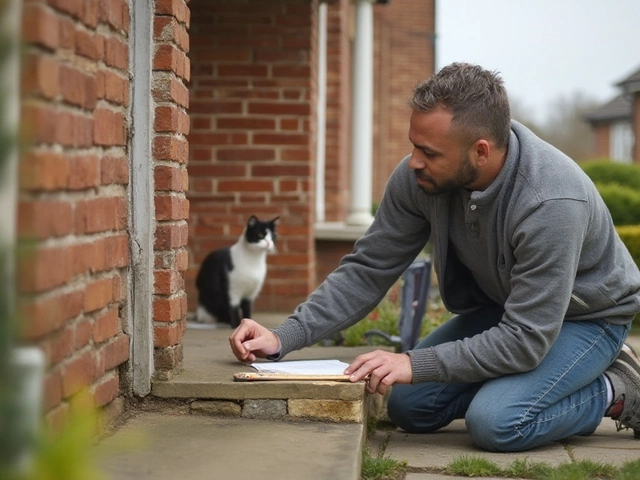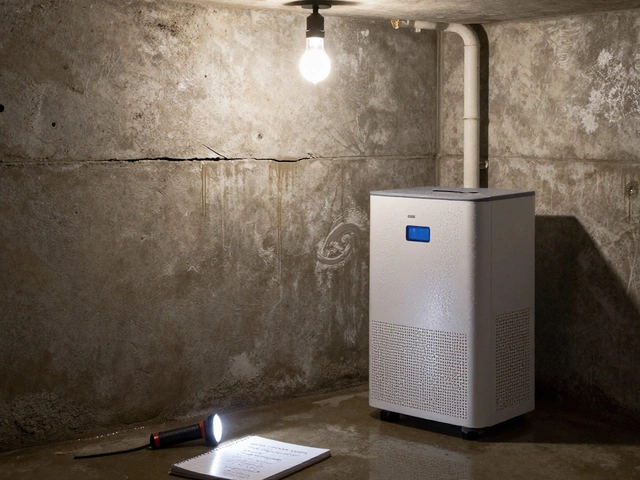Home Buying Guide: What to Check Before You Move In
Buying a house is exciting, but it can also feel like a minefield. One missed detail can turn your dream home into a costly nightmare. That’s why you need a simple, practical checklist that covers the big‑ticket items – foundation, roof, new‑build features, and hidden problems that pop up after you move in.
Foundation: Spot the Red Flags Early
The foundation is the literal base of your home. Look for uneven floors, cracks in walls that are wider than a hairline, or doors that stick. If you see a crack that’s longer than a few inches, call a structural engineer – it could mean the soil is shifting or the slab was poured poorly. A good sign is a level floor and no water stains in the basement. If the house sits on a slope, check the grading around the house – it should slope away from the foundation to guide water away.
Ask the seller for any past repair records. Knowing whether a repair was a DIY patch or a professional fix helps you gauge future costs. If the foundation shows signs of settlement after 20 years, it might be time for a specialist’s opinion before you sign.
Roof: Don’t Let a Leaky Ceiling Surprise You
Roofing is another big expense that can creep up later. Walk around the house and look for missing shingles, curling edges, or moss growth – these are quick visual clues. Inside, check the attic for water stains on the beams or signs of mold. A roof that’s over 15‑20 years old often needs a replacement, especially if the roofers charge per square with higher rates for older materials.
Ask for the roof’s age and warranty details. If the seller can provide a recent inspection report, you’ll know exactly what’s covered and what might need fixing. Remember, a small crack can turn into a major leak if water finds its way in during heavy rain.
New‑Build Features: What Comes With the Deal?
New builds sound perfect, but make sure you know what’s actually included. Some developers bundle fixtures, landscaping, and even basic warranty coverage, while others charge extra for things like upgraded flooring or kitchen cabinets. Look for the “what’s included” list in the contract – it should spell out items like doors, windows, and external works.
Be wary of hidden moisture in new builds. Even brand‑new houses can develop mold if the construction moisture isn’t fully cured. Ask for the humidity test results and ensure proper ventilation is installed in bathrooms and kitchens.
Other Hidden Costs to Watch
Beyond the obvious, there are a few subtle issues that bite later. Check the drainage system – gutters should be clear and downspouts should direct water away from the house. Poor drainage can lead to basement flooding and foundation movement.
Inspect the electrical panel for outdated breakers or missing labels. Updating an old panel is a safety risk and adds to your budget. Finally, ask about any recent renovations – a cheap kitchen remodel might hide structural changes that weren’t approved.
Following this checklist won’t guarantee a flawless purchase, but it will dramatically lower the chances of nasty surprises. Take notes, ask questions, and don’t rush the inspection. A little extra time now saves thousands in repairs later, and you’ll move into your new home with peace of mind.
Should You Walk Away from a House with Foundation Issues?

Deciding whether to walk away from a house with foundation issues can be a daunting task for potential homeowners. Foundation problems can range from minor cracks to major structural concerns, each with varying repair costs and implications. Understanding the severity of the problem, the potential costs, and the long-term impact on the house's value is crucial. This article explores these factors and offers guidance on how to make an informed decision. Learn when to negotiate, when to consult experts, and when to consider moving on.
read more



